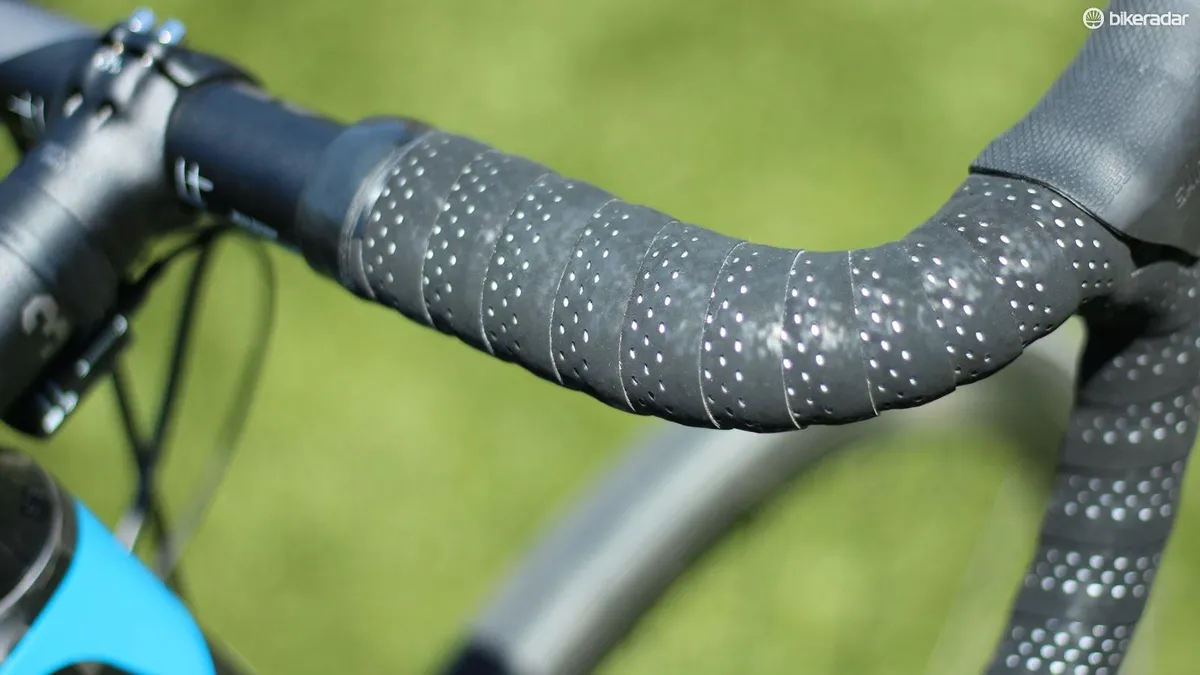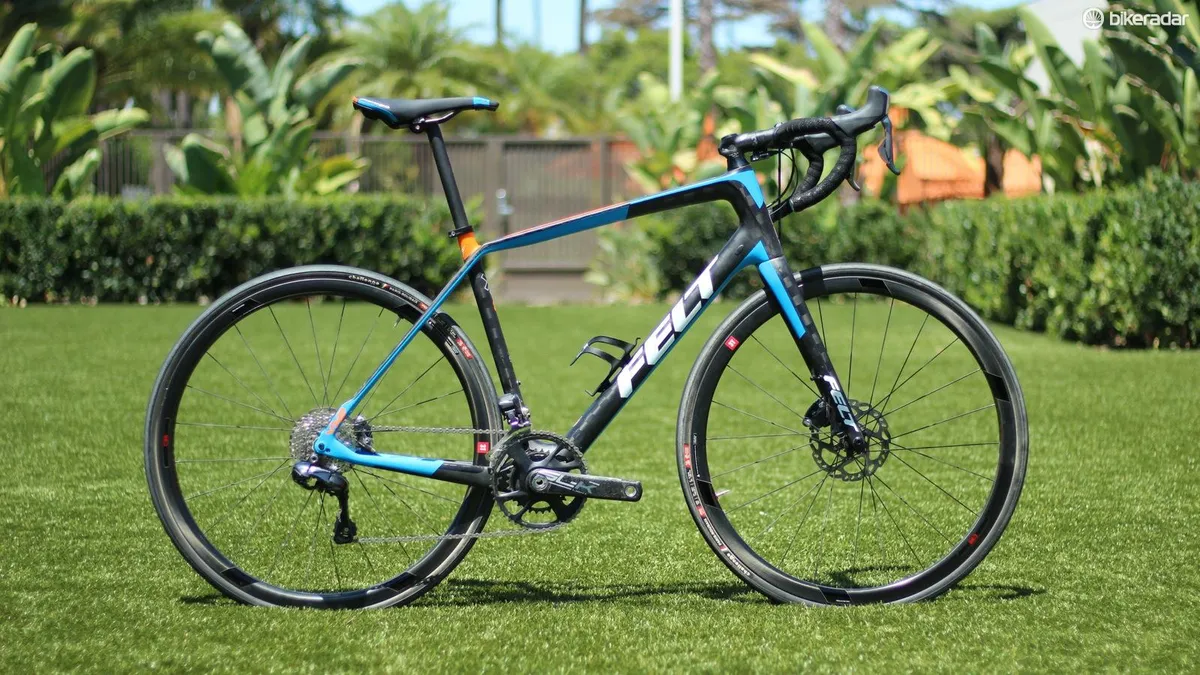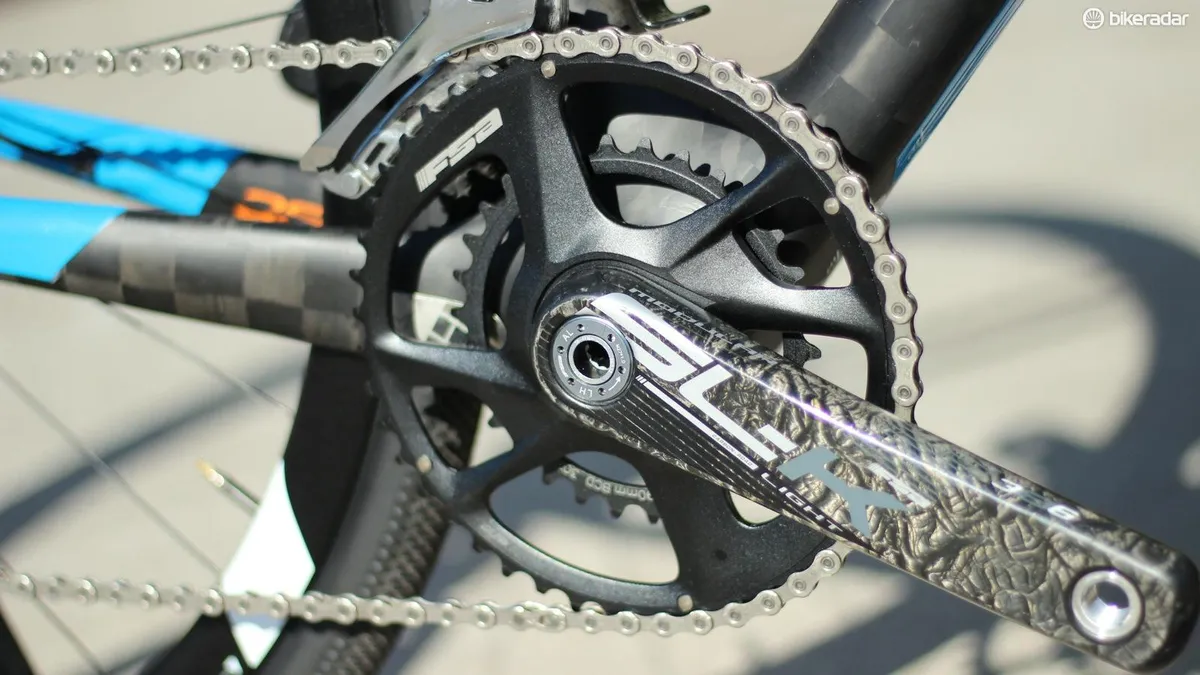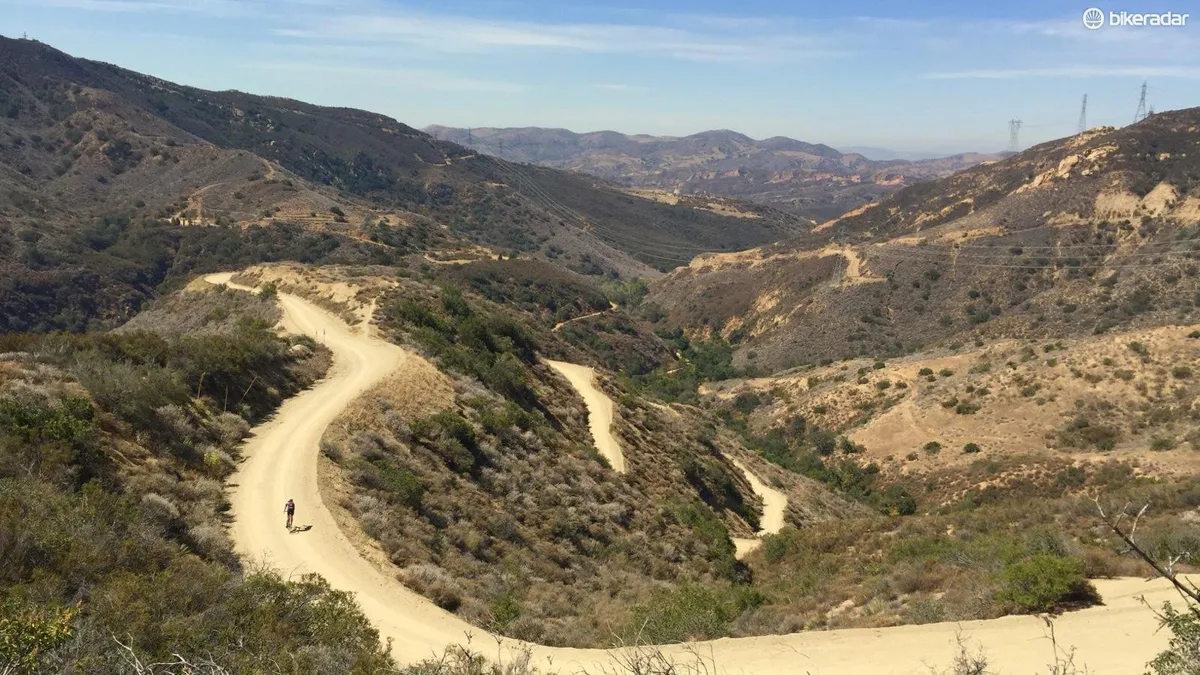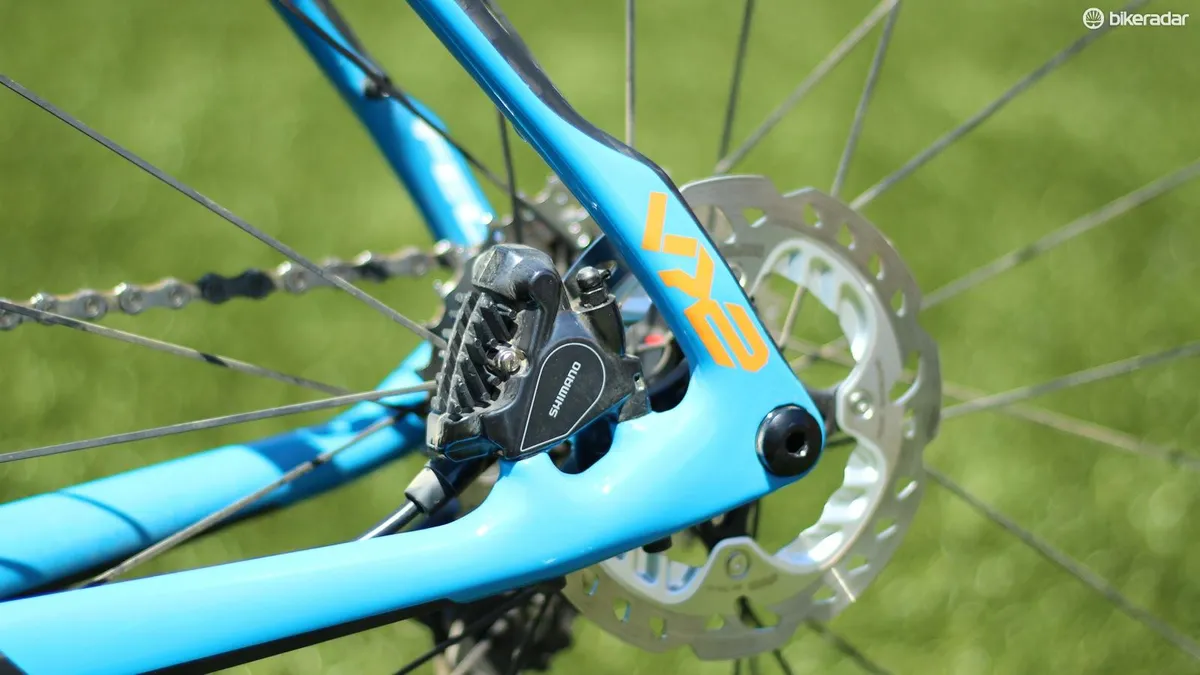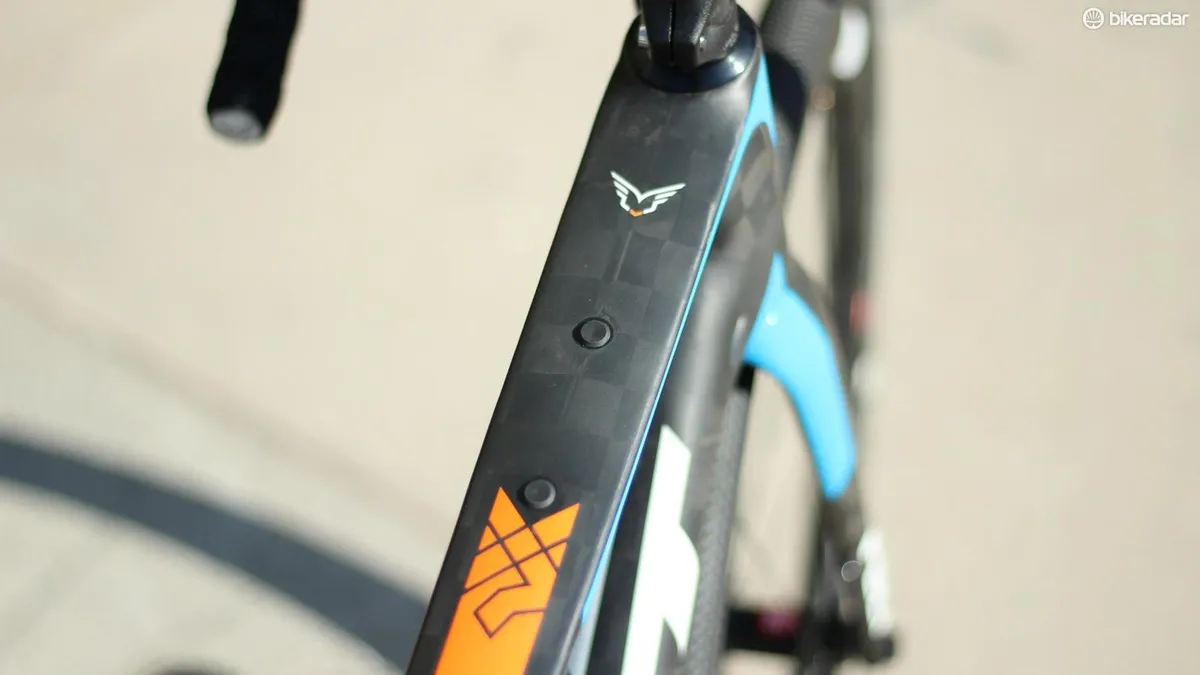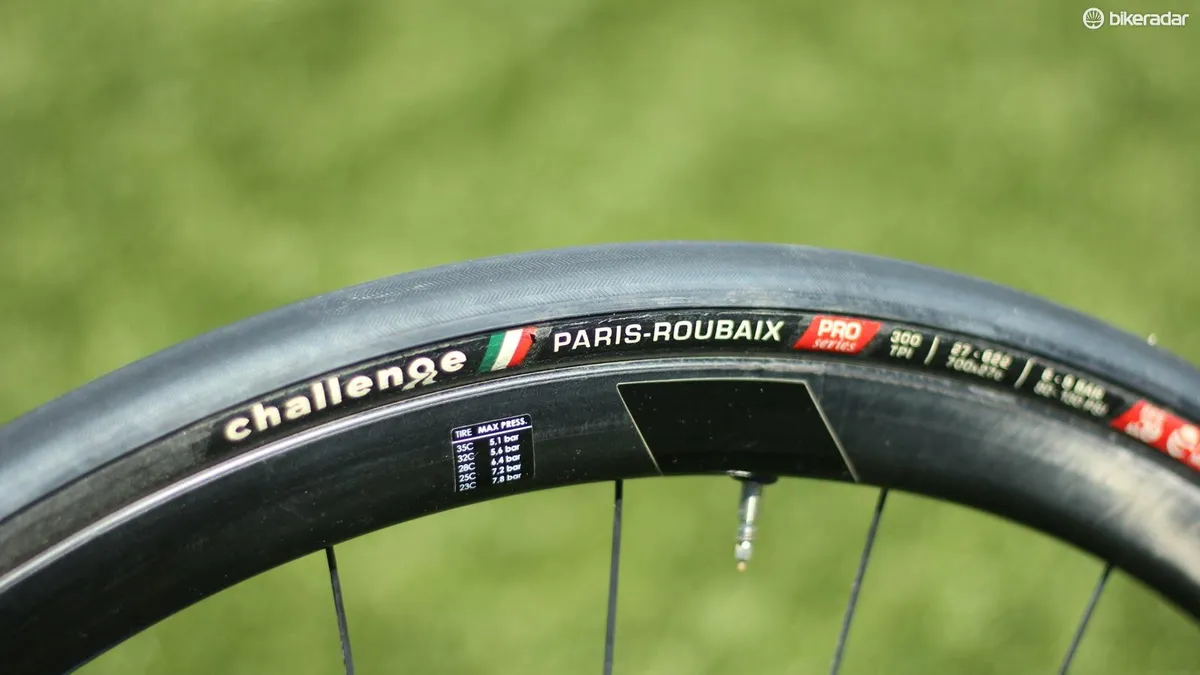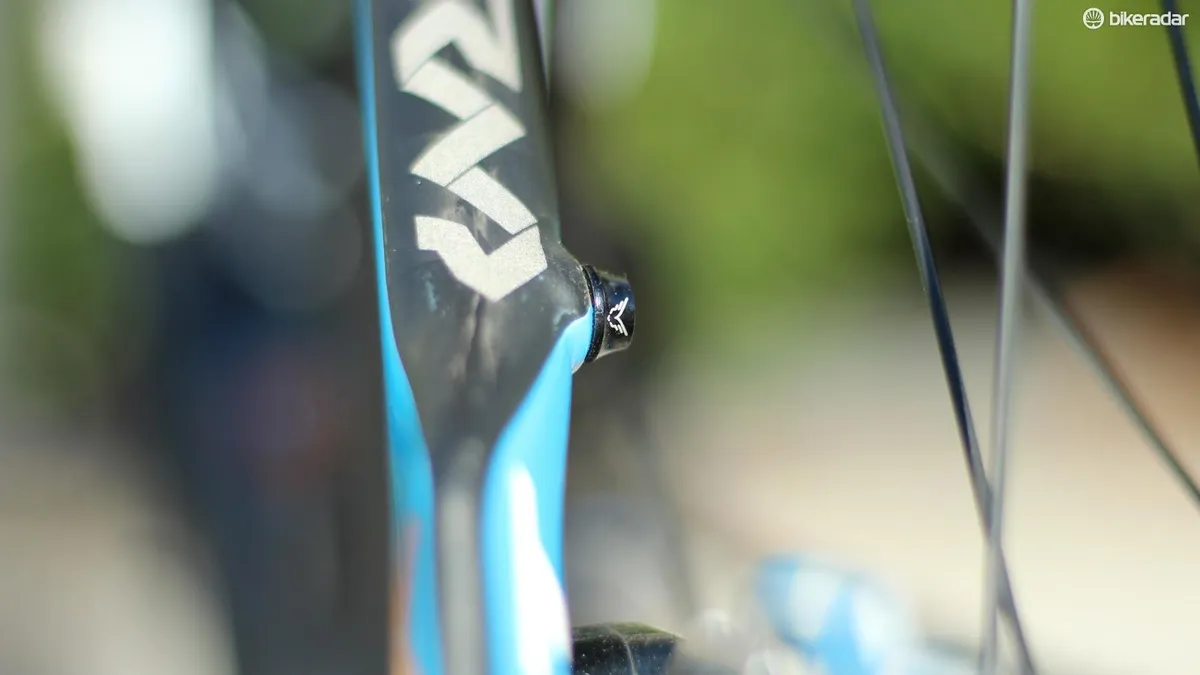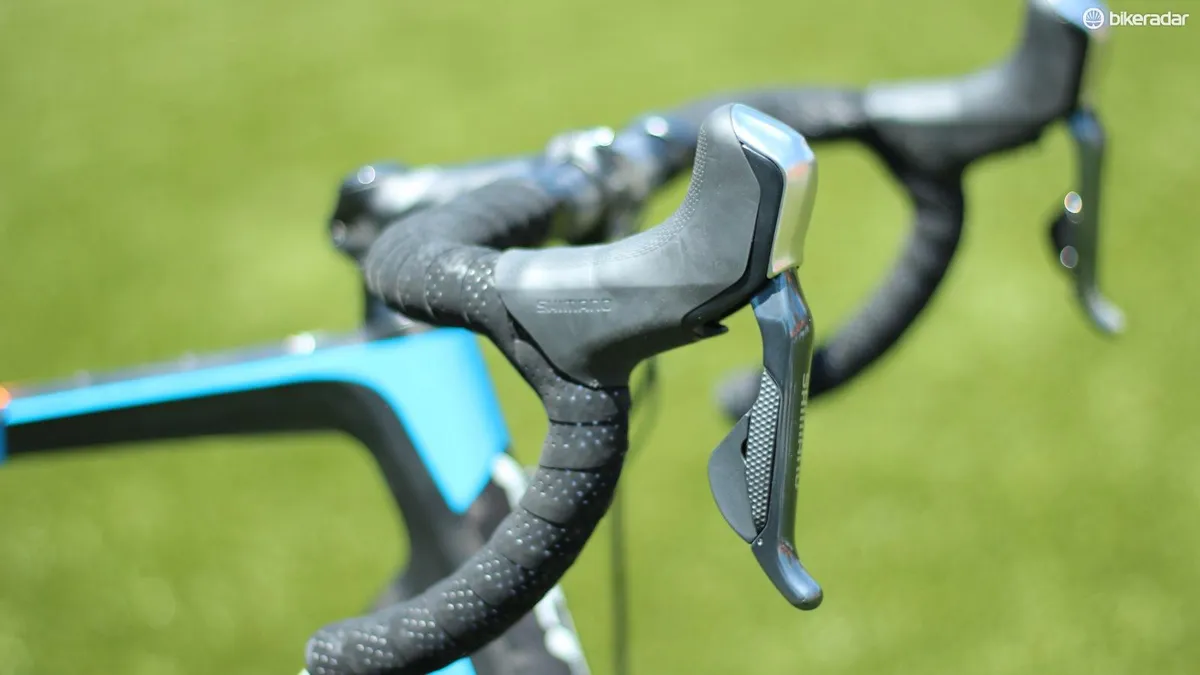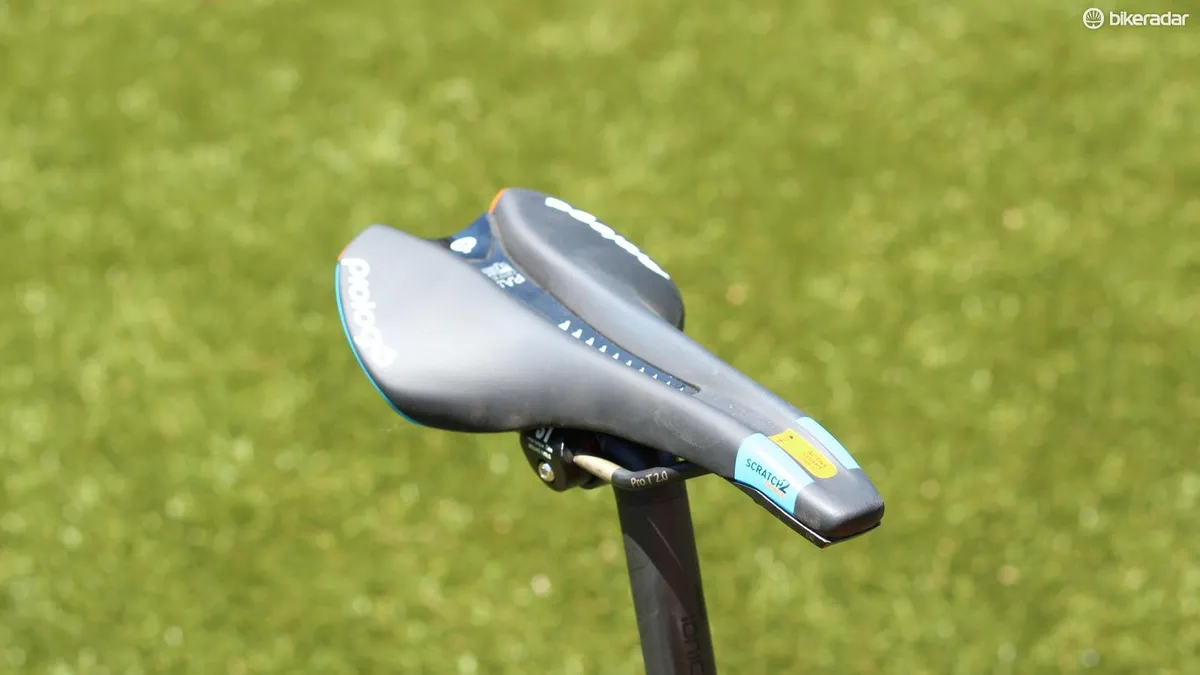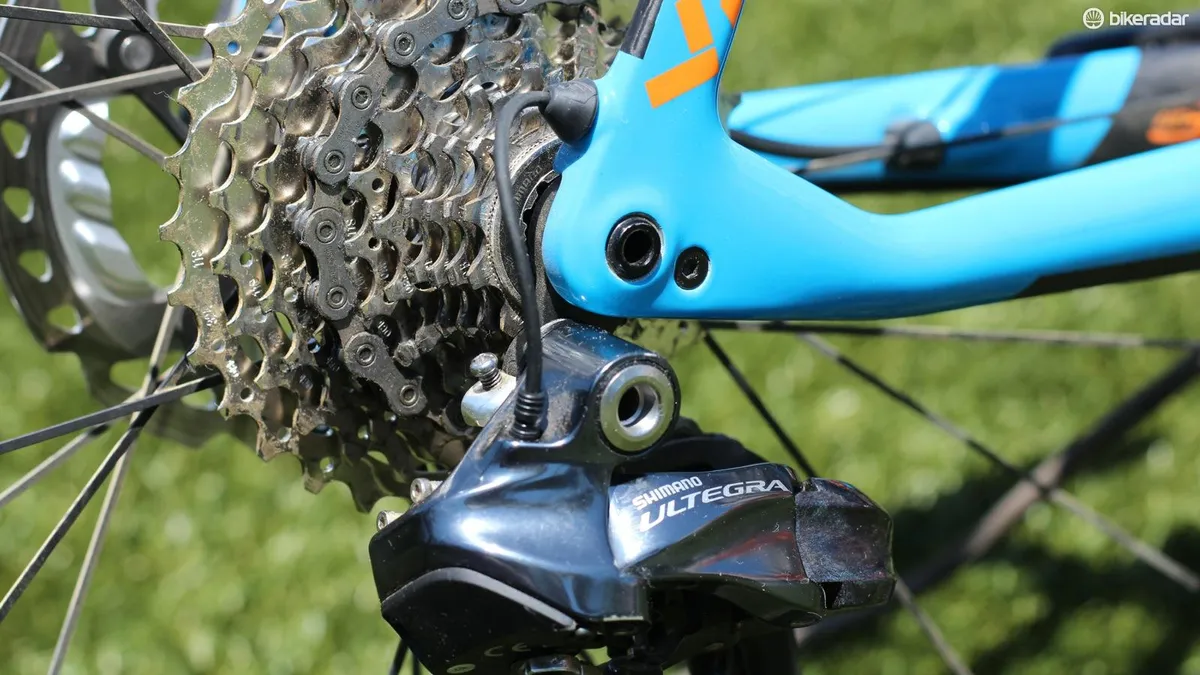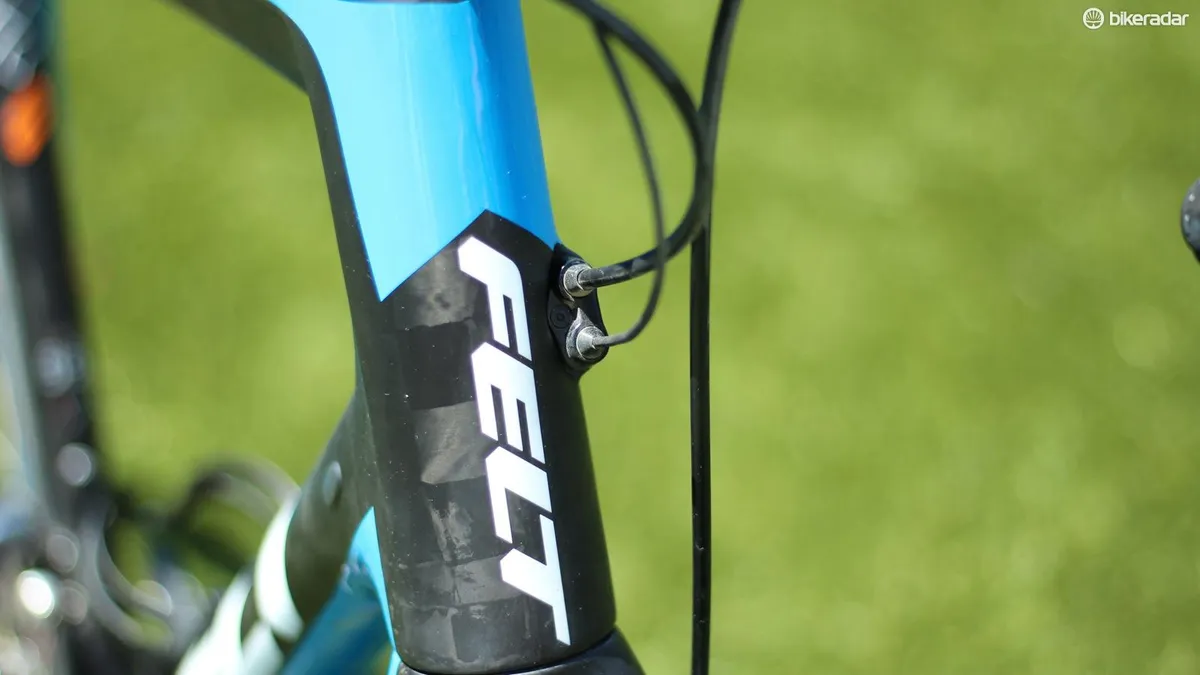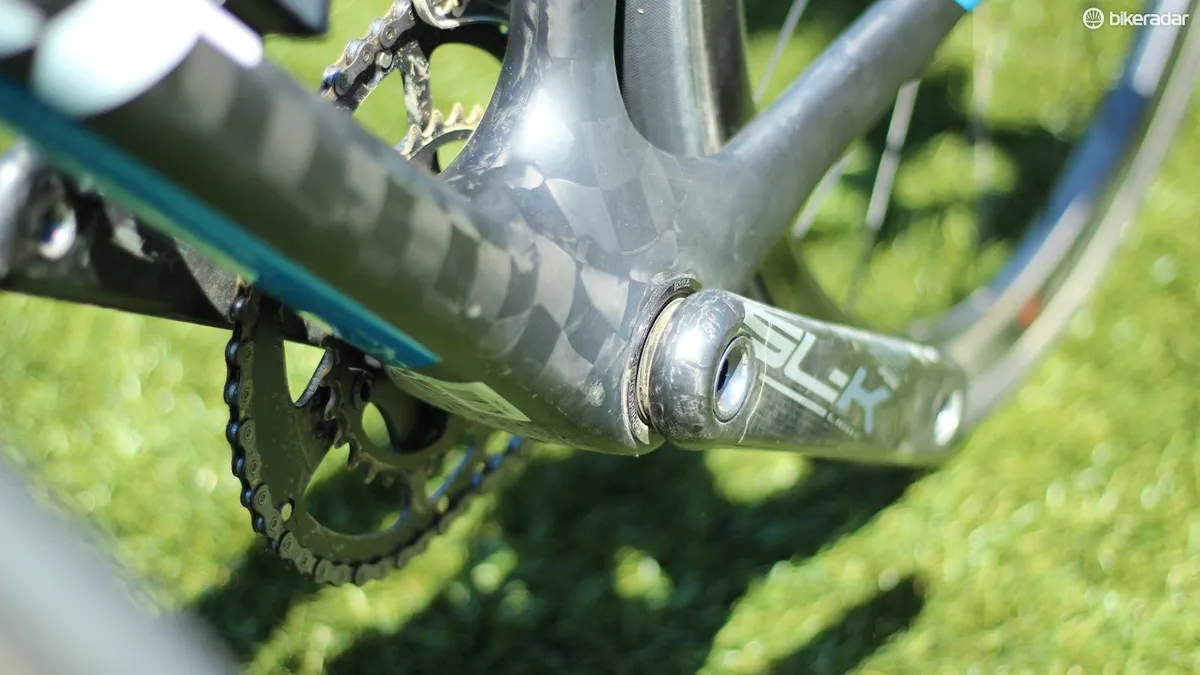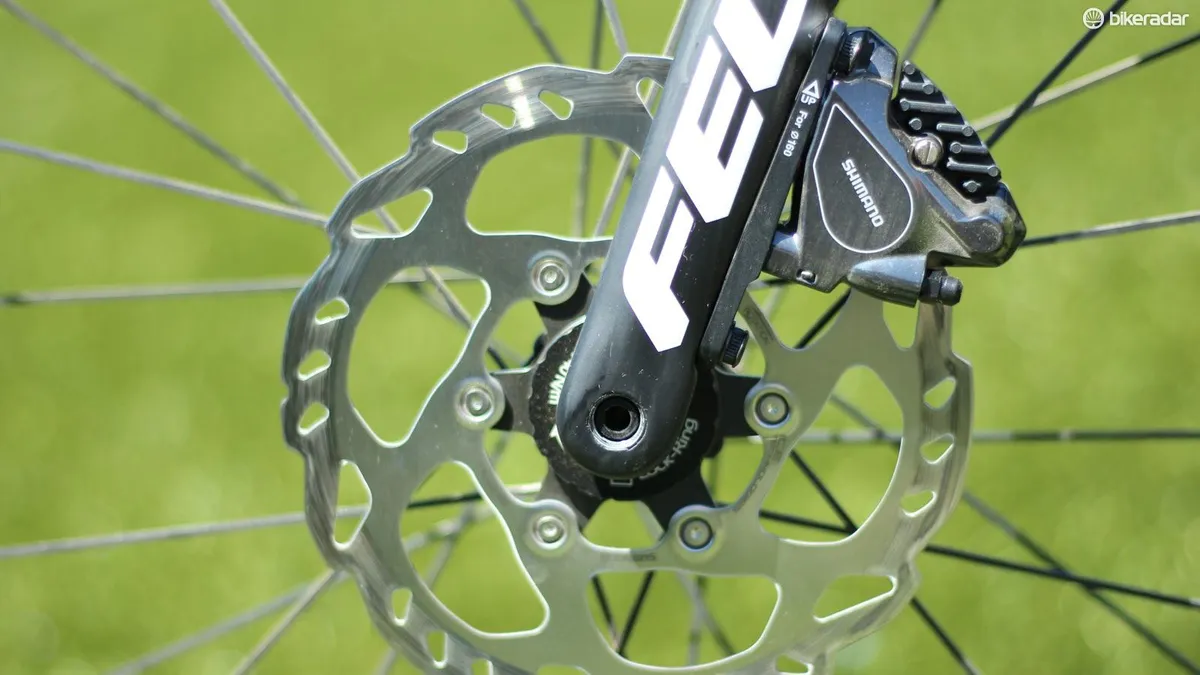As the definition of road riding expands, so too has Felt’s definition of its endurance road platform. Felt is positioning its new Felt VR — for Variable Road — as a long-haul road bike that is ready for steep climbing with low gears, and set up for rough roads with a soft rear end and heaps of tire clearance.
The bike covers all the typical endurance road bike bases, and Felt hopes it will prove dynamic enough to calmly handle a little gravel, too.
I rode the VR2 for a day in California, climbing and descending a loose dirt road in addition to your usual mix of smooth and broken asphalt.
Update 14/11/16 – we've now ridden the bike fitted with Clement's Strada USH gravel tires for Panache Cyclewear's Day in the Dirt event, which took us riding across some of Boulder's rougher dirt paths and gravel roads. Here's how we got on:
Road or cross tires for a Day in the Dirt?
Wide stance and wide tires for tackling any road
The entire VR line uses disc brakes, from the $899 VR60 to the $5,499 VR2. There is no VR1, yet, nor UK and AU pricing as of press time. There are also five women’s VR bikes, ranging from the $899 VRW60 to the $3,699 VRW3.
While most endurance bikes come with compact gearing — meaning 50/34t front rings — Felt goes way down to a 46/30 (with an ultra-wide 11-32t cassette) for what road brand manager Hubert Otlik calls “an all-day climbing bias”.
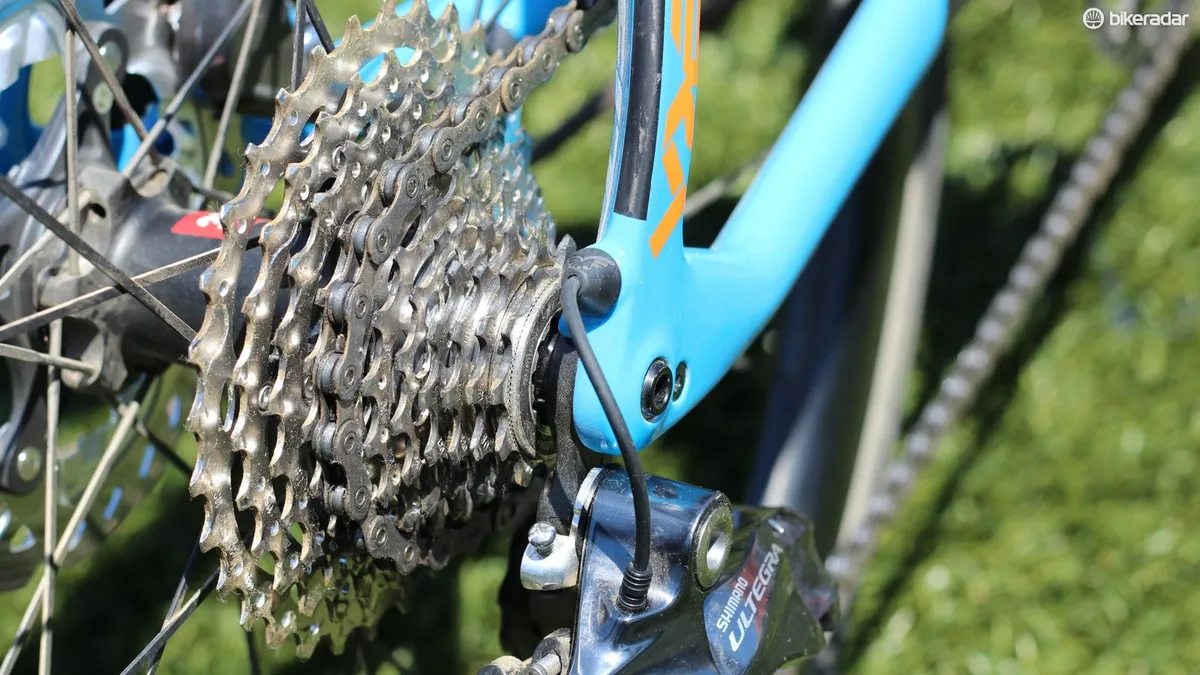
With an eye toward exploratory riding off the dry, tidy road, the bike comes with fully-sealed cable ports for electric and mechanical drivetrains — even the front brake hose routes through the fork — fender/mud flap mounts, and additional top tube mounts for a cag or a bento box, plus a fourth set of mounts on larger frames’ down tubes.
The bike technically is rated for clinchers up to 30mm wide, but at least one Felt staffer had 35mm Schwalbe G-Ones on his personal bike. ISO restriction state that bikes with tires 28mm and above need 6mm of clearance at the bike’s narrowest point (usually between the chainstays), and 4mm for tires 27mm and smaller. TheVR has a 42mm clearance circle at the narrowest point of the chainstays.
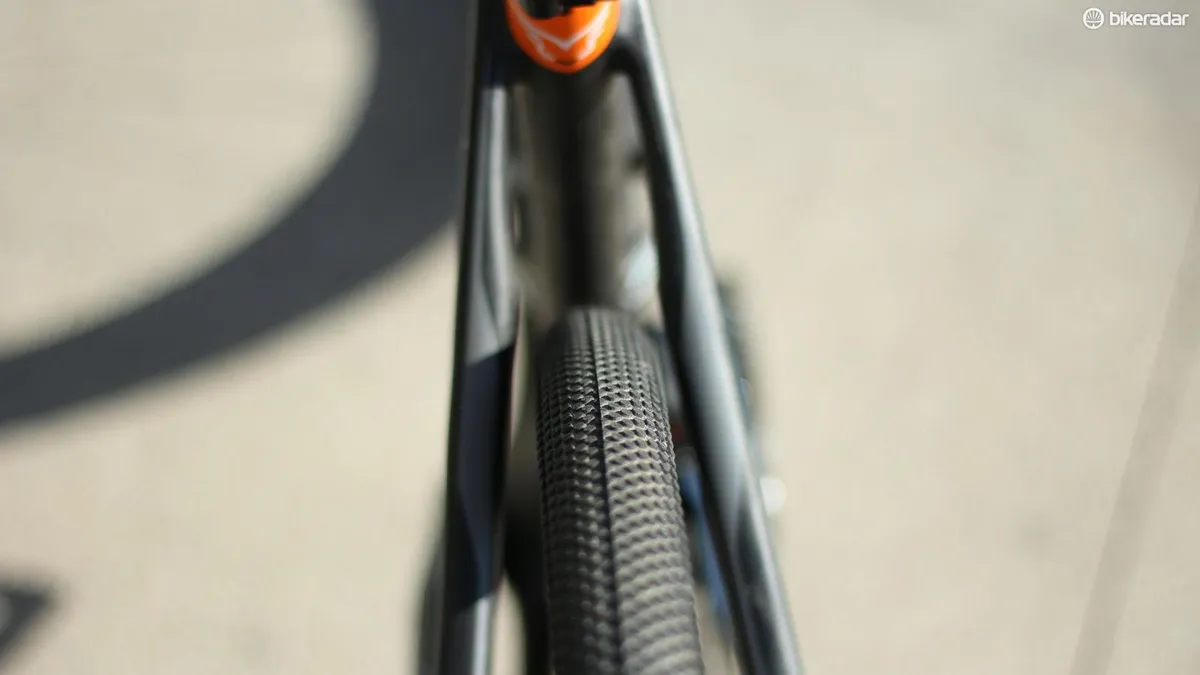
Felt’s senior design engineer Jeff Soucek said the VR, like all Felt bikes, is built with size-specific tubing.
“We have always done this, even back to when we were doing aluminum frames,” Soucek said. “We have various targets for stiffness-to-weight ratios for each size. And it’s not just a smooth curve; the 61s are relatively the stiffest.”
The VR uses what Felt calls UHC — for ultra-hybrid carbon, meaning a mix of various types and orientations of carbon fiber — and TeXtreme as a protective layer on the top-end frames.
“People talk a lot about low and high and ultra-high modulus fibers, but most people don’t understand that it’s not a good, better, best situation,” Soucek said. “Every type has a different purpose.”
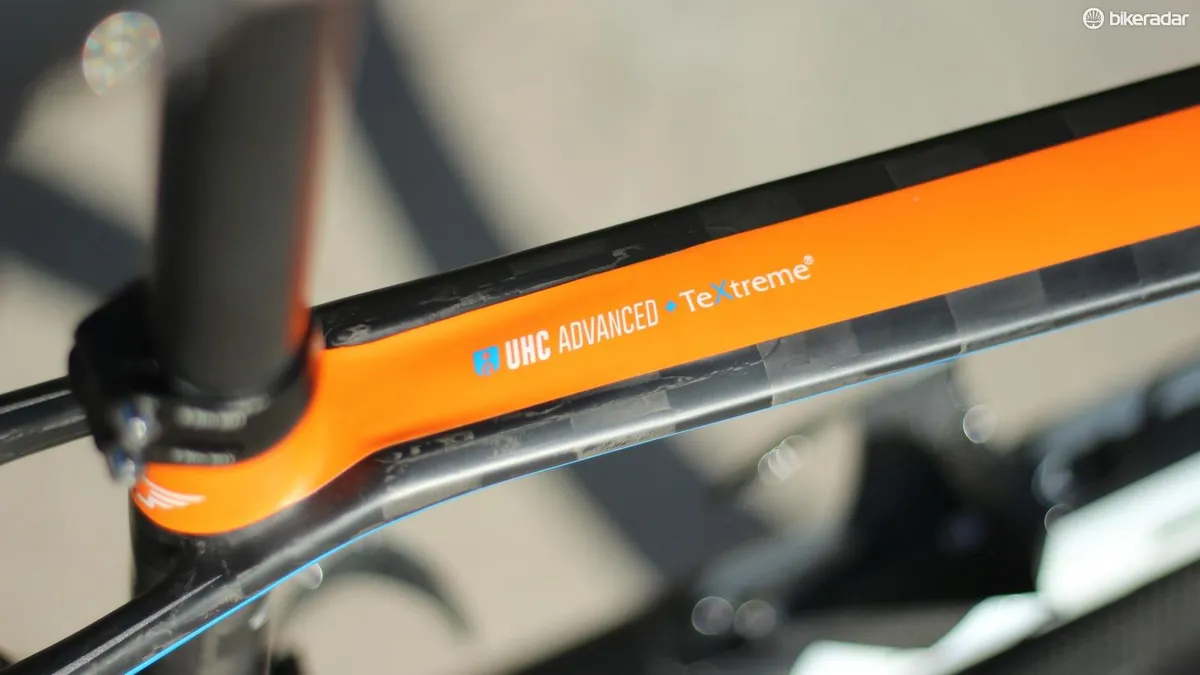
At the bike’s launch in Irvine, California, Soucek passed around a neat demonstration tool that exemplifies how carbon fiber orientation dramatically affects a carbon structure like a bike. The simple tool has two t-shaped bars of carbon; one has straight fiber in line with the main bar, the second bar’s fibers are set at 45 degrees in relation to the length of the structure. With the straight fibers, the bar is firmly resists attempts to press it straight down or pull straight up, but bends easily when twisted. The bar with 45-degree fibers acts in the opposite manner: it’s easy to push and pull on, but very difficult to twist.
TeXtreme is a patented, thin, checkerboard weave made by a Swedish company. Its claim to fame is that its about half the thickness of standard carbon, which allows it to be woven into a thin, tight weave that offers tremendous impact strength.
Felt uses three of the five TeXtreme materials, which are designated by weight. For example, TeXtreme 60 weighs 60g for 1m of material.
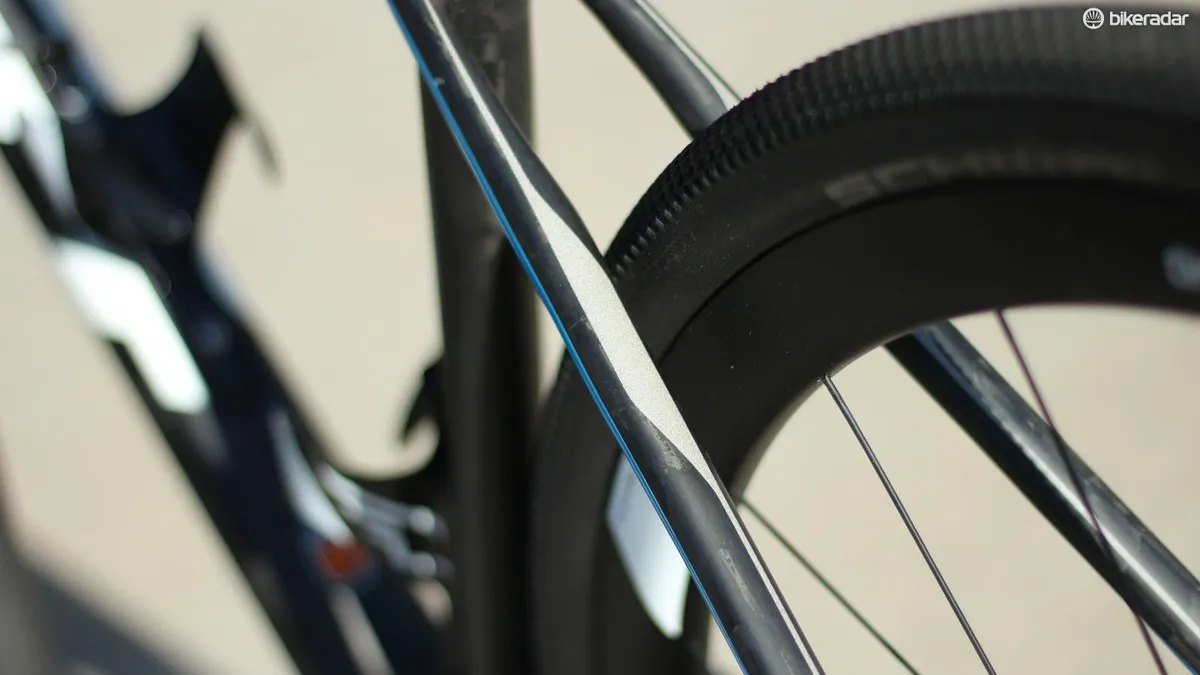
Ride impressions
On a three-hour ride that tackled a 3.7mi dirt climb and descent, the VR2 felt comfortable but not sluggish. Our test bikes had non-spec wheels and Challenge 27mm tires, but riding these at 80psi made for confidence descending in the dirt. (The bike comes with Mavic Allroad disc wheels and Mavic Yksion Elite Guard 28mm clinchers. I rode this setup for the 550mi Mavic Haute Route Rockies test event in June, and can vouch for the quality).
Although it’s difficult to parse out what is the tires and air pressure and what is the frame itself, the bike’s long, flat seat stays and 27.2mm post seemed to contribute to the plush ride.
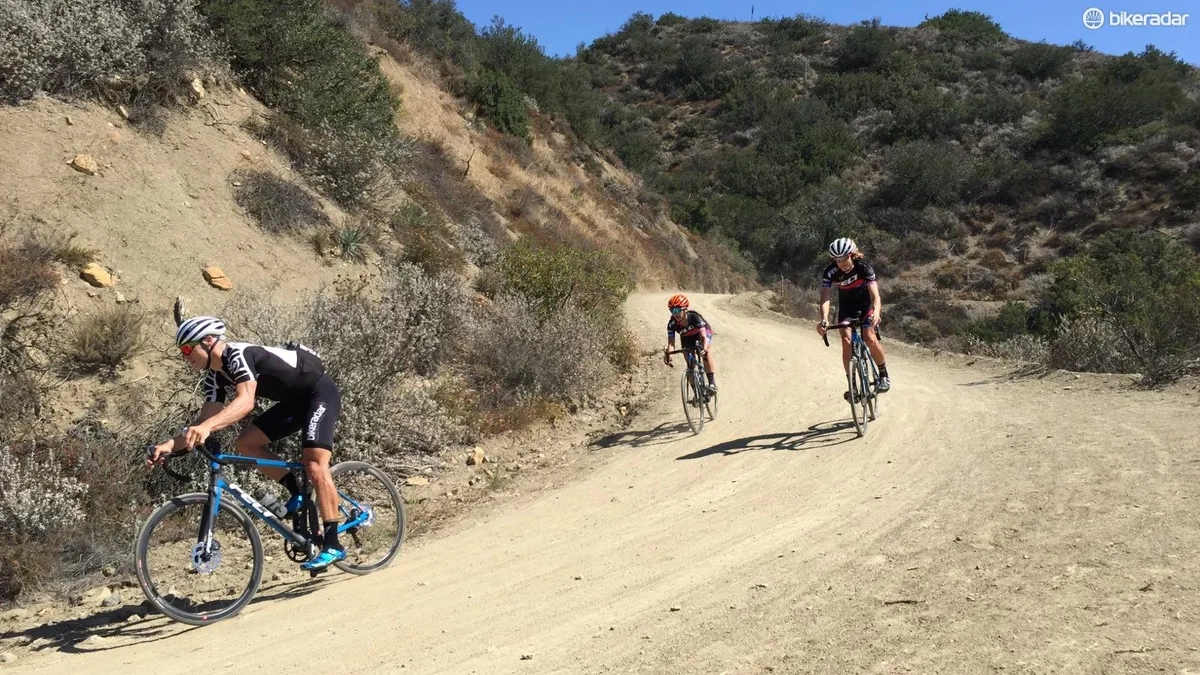
I did get a little fork shudder under hard braking into a couple dirt corners, but that could be attributed to the pads not yet being fully bedded in or perhaps a little contamination on the rotor. The braking itself was flawless as I’ve come to expect from Shimano road hydraulics.
I enjoyed and indulged in the low gearing on the dirt climb, but spun out the 46-11t top gear on the few paved downhills.
On the asphalt, the VR still felt fast, a testament to the Challenge clinchers as much as anything. The Prologo saddle and flat-top 3T bar offered comfortable perches, and while we didn’t ride at night, I appreciated the integrated reflective elements.
